|
John Tyman's Cultures in Context Series Torembi and the Sepik A Study of Village Life in New Guinea |
|
Topic No. 3: Vegetation Types |
|
John Tyman's Cultures in Context Series Torembi and the Sepik A Study of Village Life in New Guinea |
|
Topic No. 3: Vegetation Types |
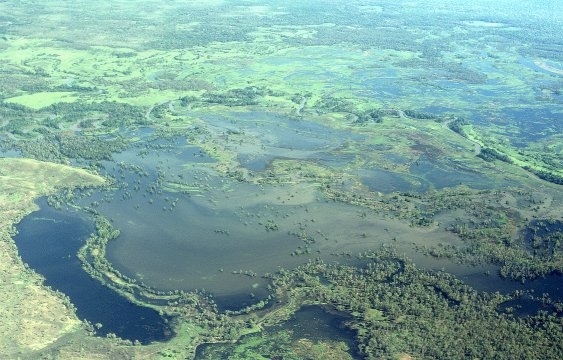 |
| 017. The swamps are found in low-lying areas from which water drains away only slowly. Here the land is almost level and the rivers wander around all over the place. |
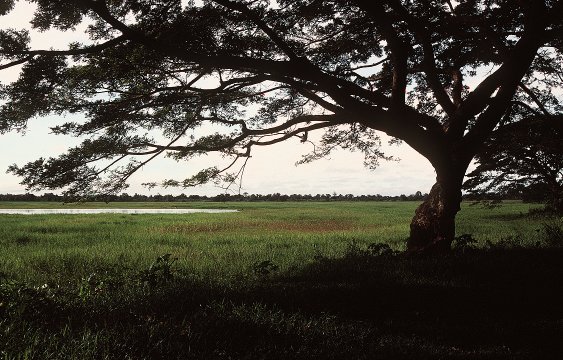 |
| 019. The swamp grasses shown here extend to the Sepik River in the background … its course marked by the trees which line its levee banks (because they are better drained). |
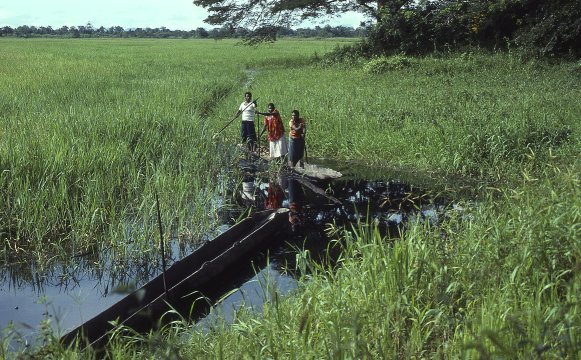 |
| 020. Often only narrow channels remain open, along which fishermen push their canoes through shallow water. |
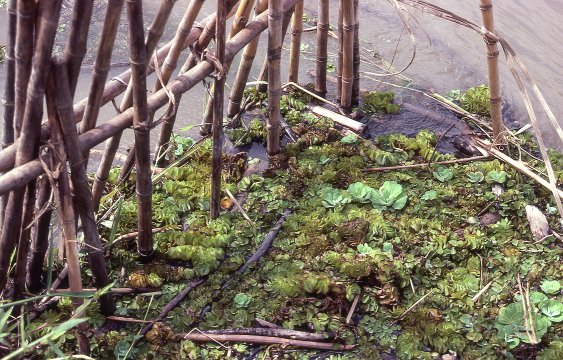 |
| 022. Fishermen were unable to cast their nets, and their traps were choked with weed. Attempts by government authorities to eradicate it have met with at least some success. |
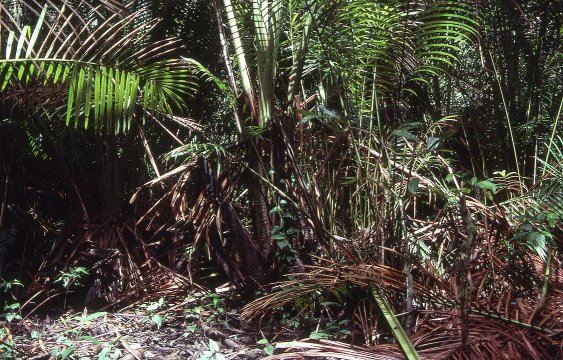 |
| 023. Secondly, in slightly higher areas, where the surface does dry out a bit between rainy seasons, the swamp grasses are replaced by swampy woodland. |
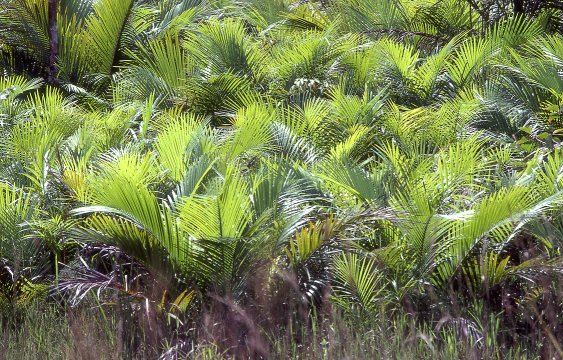 |
| 024. Here the dominant species is the sago palm. Sago swamps play an important part in the life of the people here, and all villages have access to swamps like this. |
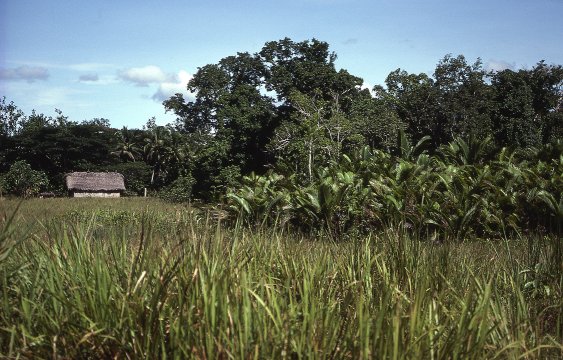 |
| 025. The starch separated from the fibres in the trunks of the palms is a major foodstuff. |
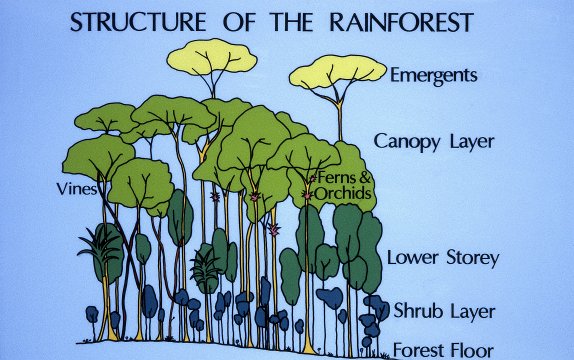 |
| 027. The trees grow close together with their crowns touching… so that viewed from above the forest is a green carpet of interlocking tree tops. |
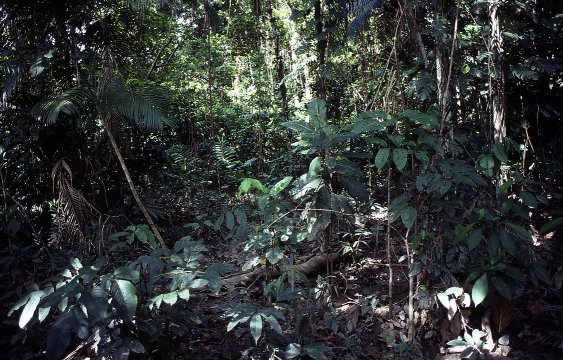 |
| 028. The area beneath the trees is well shaded, cool and moist. As a result, the ground is almost bare in places, since few plants grow well in the shade. |
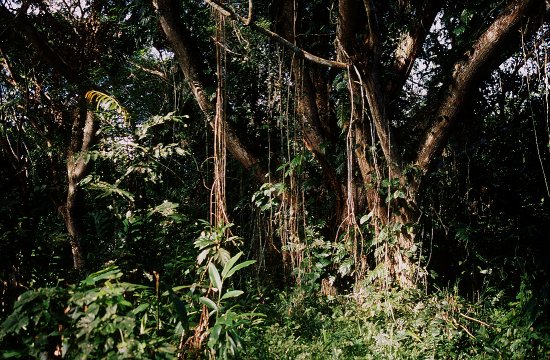 |
| 029. Other plants, using the trees for support, climb upwards, seeking sunlight, so that woody creepers hang from many of the trees. |
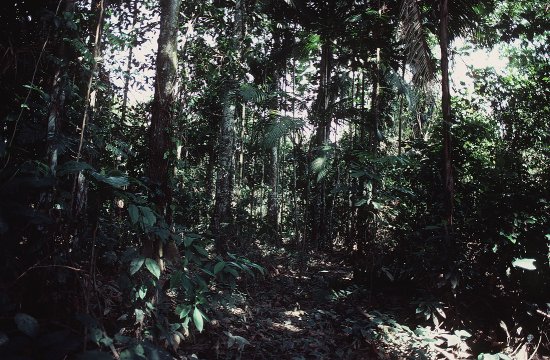 |
| 030. But you’ll find few tall trees near the village, since most of the area has been cut over many times, to provide the clearings used as vegetable gardens. |
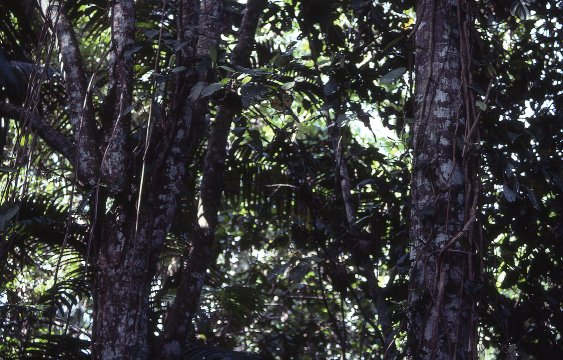 |
| 031. The tallest trees today are found generally in those sections of the forest which have been reserved for the use of ancestral spirits. |
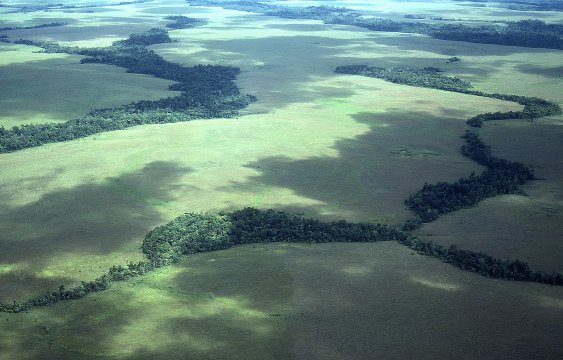 |
| 034. In other words, although the climate is hot and reasonably wet, the drier areas really have a savanna type of vegetation, in which grassy tracts alternate with lines of trees. |
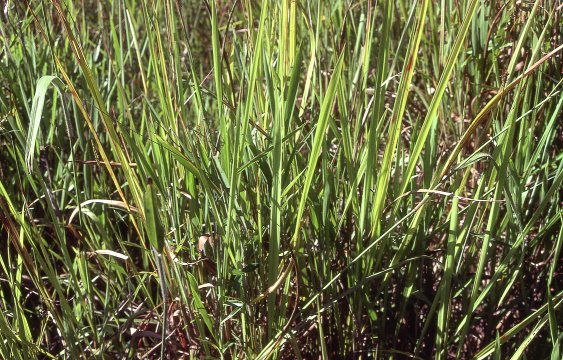 |
| 035. The grass is coarse, with thick blades, and is of limited value as pasture. |

Back to Cultures in Context Intro: Photos & Recordings
BACK TO THE TYMAN NEW GUINEA CONTENTS PAGE
Text, photos and recordings by John Tyman
Intended for Educational Use Only.
Copyright Pitt Rivers Museum, Oxford University, 2010.
Contact Dr. John Tyman for more information regarding licensing.